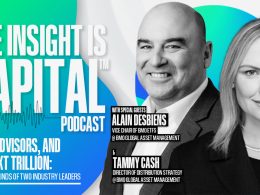by Seth J. Masters, AllianceBernstein
In the past few weeks, central banks have reaffirmed their intent to do “whatever it takes,” in European Central Bank (ECB) President Mario Draghi’s words, to address the various ailments afflicting the global economy. While central bank actions may or may not have their desired effects on the real economy, they do create short-term opportunities and medium-term risks for investors, as my colleague Jon Ruff explains below.
Today, the Federal Reserve reiterated that it will “increase policy accommodation” because they are concerned that “without further policy accommodation, economic growth might not be strong enough to generate sustained improvement in labor market conditions. Furthermore, strains in global financial markets continue to pose significant downside risks to the economic outlook.”
These comments follow Fed Chairman Ben Bernanke’s speech two weeks ago in Jackson Hole, Wyoming, in which he reiterated that quantitative easing (QE) works primarily by reducing the “supplies of various assets available to private investors” and therefore “affect(ing) the prices and yields of those assets.” In other words, the primary objective of QE is to inflate asset prices. The Fed buys US Treasury bonds from investor A, who turns and buys US high-yield bonds from investor B, who turns and buys US equities from investor C.
US yields go down. US asset prices go up. Everybody is happy—except for two things.
First, these liquidity flows invariably end up in areas of the market least able to handle them. Investor C gets taken out of the highest return opportunities in the US, leaving emerging-market-related assets as the only place left with yield and growth opportunities. Subsequently, money flows to commodities, higher-yielding currencies and emerging-market real estate. Unfortunately, these markets are not as liquid as US stock and bond markets, so the liquidity flows have a disproportional impact on prices. While that’s good for owners of these “real assets” in the near term, it is not good for emerging-market economies that have to deal with food inflation, strengthening currencies and domestic real estate bubbles.
Second, the Fed buys bonds with new money that is tinder for a potential inflationary fire. Currently, banks don’t want to lend and the private sector doesn’t want to borrow, so the new money sits idle as bank reserves. But if (when?) a spark ignites the supply and demand for credit, watch out: the Fed will have to properly identify, time and execute an exit strategy or face an inflationary outbreak that will make the 1970s look tame. Such an outbreak would likely prove to be good for owners of real assets, at least relative to traditional stocks and bonds, but it would not be good for the US economy.
We expect to see continued asset-buying announcements from central banks around the world: the ECB last month, the Fed today, the Bank of Japan imminently. The impact of these announcements, and ensuing implementations on the real economy, are likely to be ambiguous at best. However, our research suggests that “real assets” such as real estate and commodities will profit from asset purchases in the near term and protect from related inflationary risks in the medium term.
The views expressed herein do not constitute research, investment advice or trade recommendations and do not necessarily represent the views of all AllianceBernstein portfolio- management teams.
Seth J. Masters is Chief Investment Officer of Defined Contribution Investments and Asset Allocation at AllianceBernstein and Chief Investment Officer of Bernstein Global Wealth Management, a unit of AllianceBernstein. Jon Ruff is the lead Portfolio Manager and Director of Research—Real Asset Strategies at AllianceBernstein.












